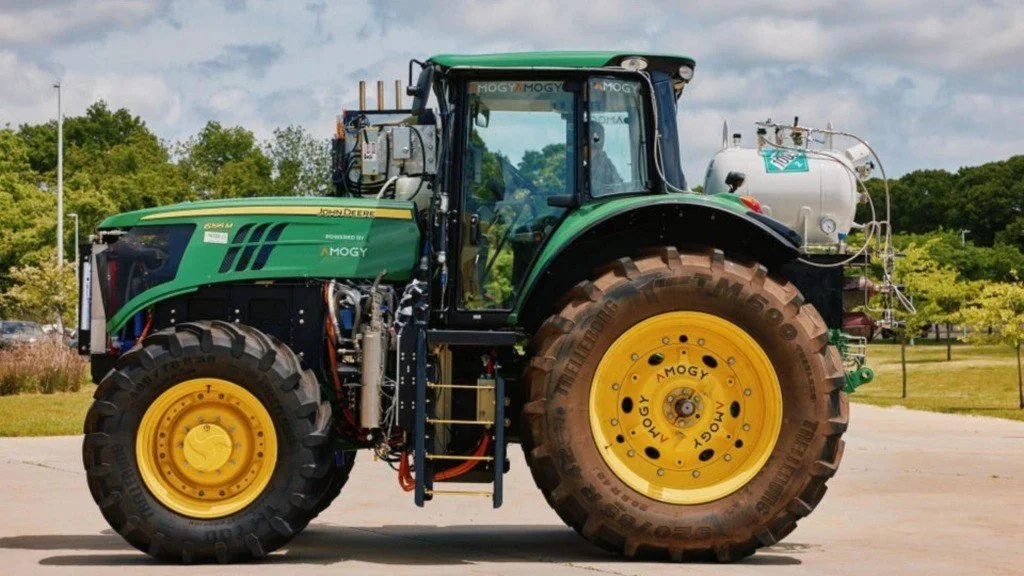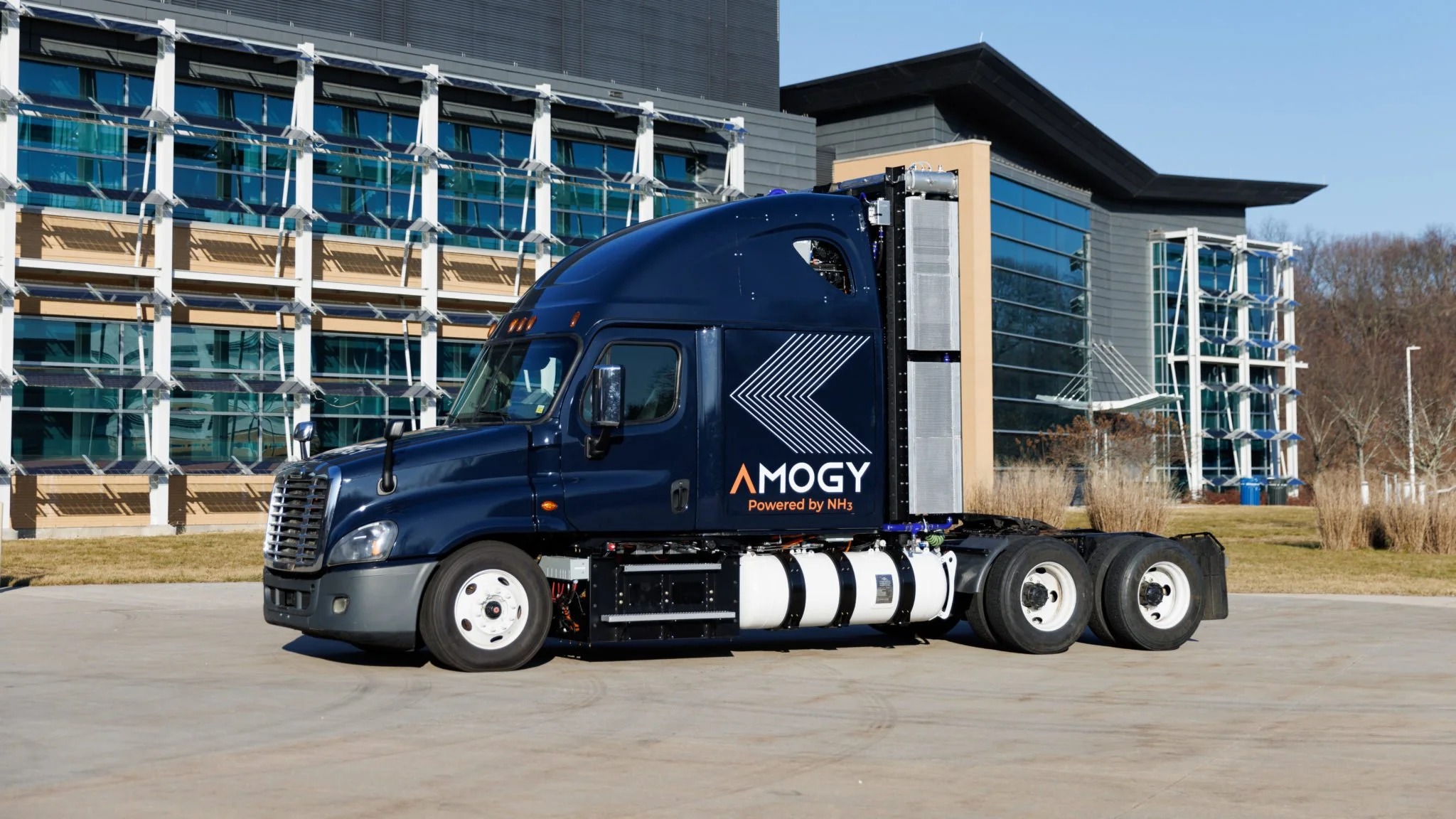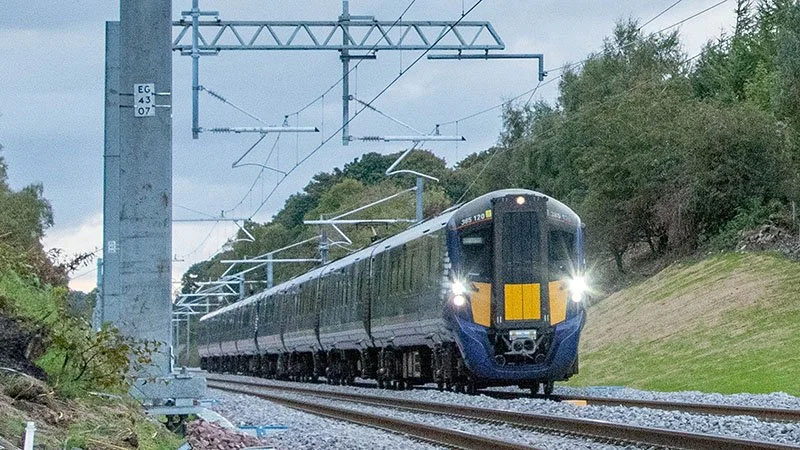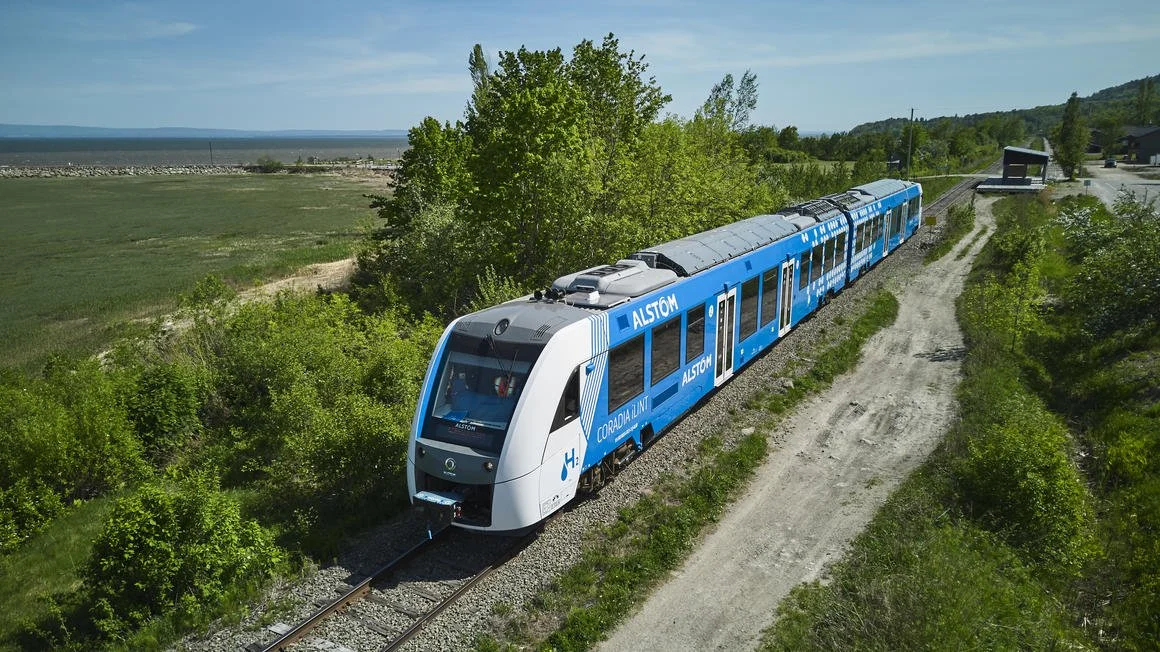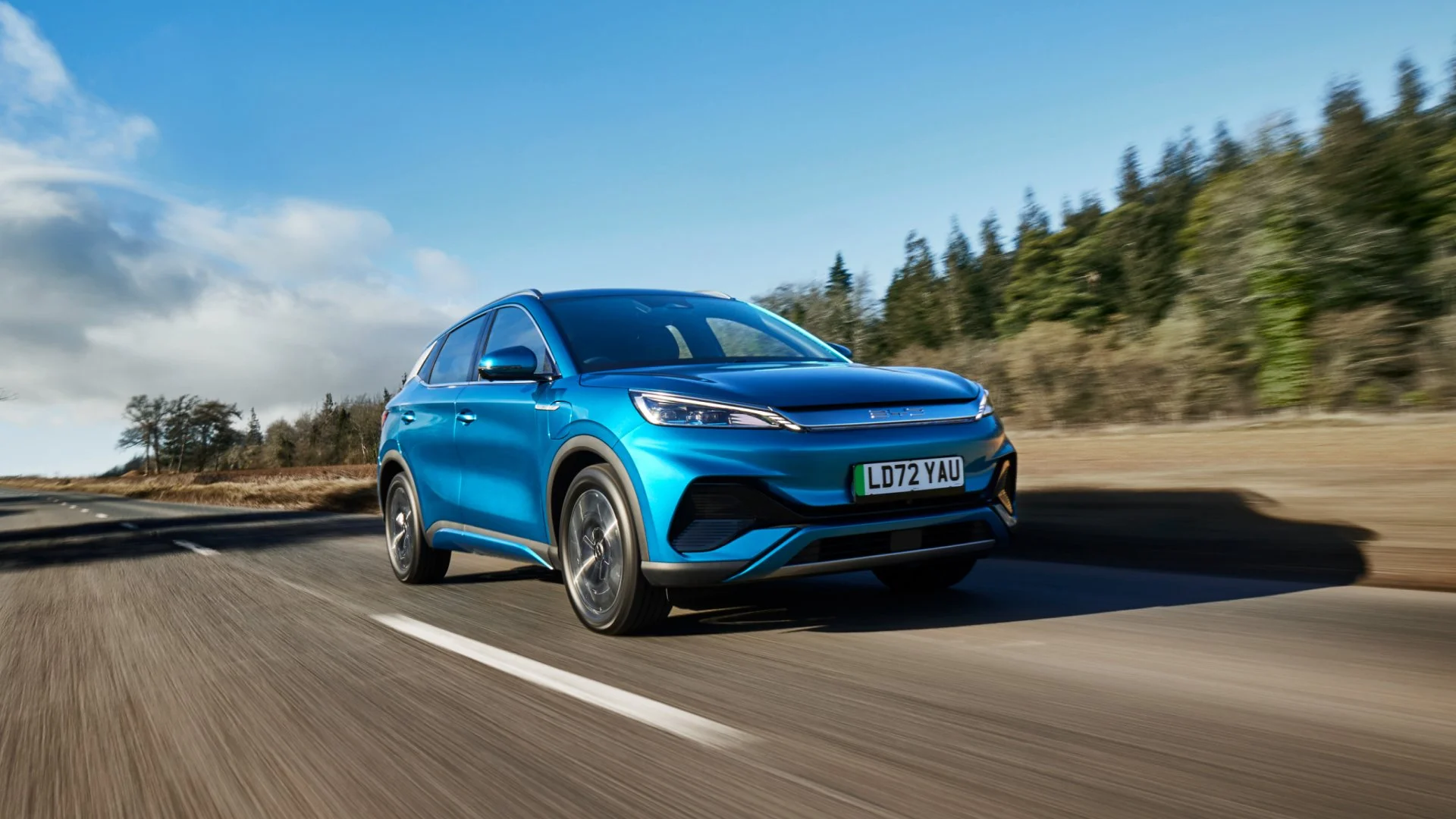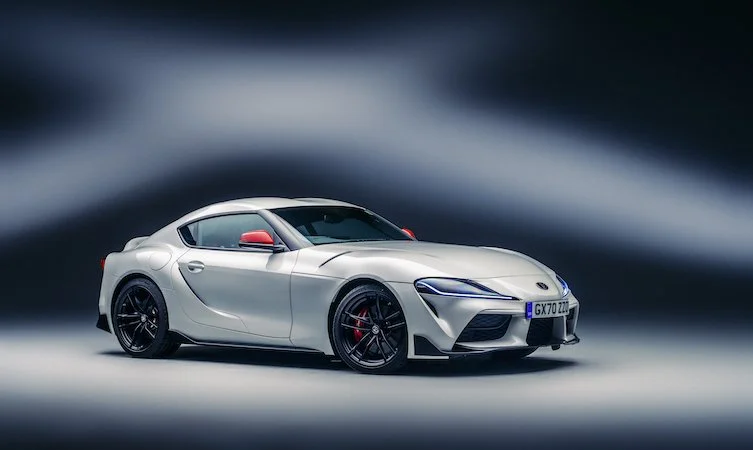Green Ammonia in other Transport Applications
The main transport applications envisaged for Green ammonia are shipping and aviation, with both industries under increasing pressure to cut their emissions of carbon dioxide and other greenhouse gases in line with international targets. But the transport (and traction) uses of Green ammonia fuel are set to extend much further than that - into trains, buses, agriculture and mining.
Transforming Transport & Traction
In addition to shipping and aviation, Green ammonia is well suited to many other transport applications, and work is under way in a number of vehicle types to take forward its potential to replace fossil fuels. In general, larger vehicles are best suited to the fuel, such as trains, trucks, tractors and other agricultural machinery, mining machinery, heavy construction vehicles, and buses.
One reason is that the containment for the ammonia will be either heavy (for pressurised ammonia) or bulky (for cold ammonia due to the insulation required) making its use less readily accommodated in smaller vehicles.
A second reason for avoiding smaller vehicles is that they would present many more opportunities for accidental releases of ammonia to the atmosphere in the event of malfunction or during maintenance, with potential health and environmental consequences. At least initially, it will be precautionary to restrict the use of ammonia fuel to more formal, managed settings.
Thus Amogy, a US company dedicated to ammonia power delivery in transport and other uses, recently demonstrated the world’s first ammonia powered semi truck, a 300kW retrofitted 2018 Freightliner Cascadia powered by Amogy’s ammonia-to-power system (see photo).
This follows similar achievements with a 5kW drone, and a 100kW mid-size John Deere tractor (see photo). Their team is currently retrofitting a 1MW tugboat, the NH3 Kraken, which is on track to be the world’s first ammonia-powered vessel.
Photo: a John Deere 100kW tractor converted by Amogy to run on ammonia. Credit: Amogy.
Photo: A 300kW semi truck converted to run on ammonia fuel, undergoing testing at Stony Brook University, New York State, USA, in 2023. Credit: Amogy.
Photo: A stretch of electrified railway in the UK. Electric railways are cheaper, faster and more reliable than those fuelled by diesel. But reluctance to invest the required billions of pounds has left the UK lagging behind continental nations. Credit: Instutution of Mechanical Engineers.
Photo: A WABTEC FLXdrive battery-electric locomotive of the kind ordered by Brazil’s Vale mining giant to replace diesel fuelled units on the Grande Carajas line. The two companies will partner on developing an ammonia/battery-electric version. Credit: Wabtec.
Photo: Alstom’s ‘Coradia iLint’ hydrogen-powered train, which was successfully trialled in Quebec, Canada, in 2023, carrying over 10,000 passengers. Credit: Alstom.
Trains
Green ammonia is an attractive fuel for non-electrified railways, which are common throughout the world and even in some industrially developed countries such as the UK, owing to the high capital cost of electrification - typically around £1 million per single track kilometre (but below £0.5m/stk in Switzerland and Germany, and as high as £2.6m/stk in UK).
On that basis it would cost some £31 billion for Network Rail to complete its intended 13,000 km electrification programme for 2050, seen as essential to both reduce both local pollution and achieve ‘net zero’ CO2 emissions (presuming all the power comes from renewable generators).
Additionally, the UK has some 2,900 diesel locomotives in operation (as of March 2023) and these are all due to be replaced by 2040 with either electric or dual mode diesel / electric locomotives. An initial order for 30 Stadler Class 93 ‘tri-mode’ (diesel / battery-electric) has been placed at a reported cost of £4 million per unit. At that price the replacement of the entire stock would cost some £12 billion.
This suggests that for a similar level of investment in new locomotives adapted for Green ammonia fuel, equivalent environmental benefits might be achieved while avoiding a potential £31 billion capital cost. At the very least the Class 93’s 900kW diesel engines should be specified to be compatible with future conversion to ammonia operation.
Deutsche Bahn is clearly thinking along these lines despite Germany’s advanced state of railway electrification: DB and Fortescue Future Industries (FFI) are collaborating to modify existing diesel engines to run on ammonia / hydrogen fuel with a view to powering railway locomotives and other large traction units, using Ammonigy’s ammonia cracking technology. A prototype converted diesel engine is currently being tested, with results expected later in 2024.
Meanwhile in Brazil, important moves towards ammonia fuelled trains are progressing, The metals and mining multinational Vale recently announced a partnership with Wabtec to advance the decarbonization of Vale’s rail operations. Currently diesel locomotives are used to haul each trainload of 45,000 tonnes of iron ore in 330 railcars the 972km (604 miles) from Vale’s Carajas mine in Para state to the Ponta da Madeira marine export terminal. Three of Wabtec’s FLXdrive battery locomotives (see photo) are now on order and will replace diesel engines on the route.
The two companies will move on collaborate to test ammonia as an alternative fuel, says Vale’s Director of Energy, Ludmila Nascimento: “Initially, we are maximizing energy efficiency, replacing the diesel locomotives in the dynamic helper with battery ones, but the idea is that, in the future, the other locomotives on the train can be fueled by ammonia.”
Pure hydrogen fuel may also play a role in the transition to clean, Green railways. In 2023 Alstom concluded a successful demonstration of the first commercial hydrogen-powered train service in North America. The company’s Coradia iLint hydrogen-powered train successfully carried more than 10,000 Quebec passengers from mid-June to the end of September, saving approximately 8,400 litres of diesel and 22 tons of CO2 emissions over the period.
Alstom claims, together with its partners, to have “laid the foundation of a comprehensive, safe and efficient H2 ecosystem for the heavy transportation sector in North America, from production to refuelling to operation.”
Decarbonizing Mining Vehicles
In 2010 the mining sector was estimated by the UNFCCC to produce about 2% of worldwide greenhouse gas emissions, around 1Gt of CO2 equivalent per year. These arise from a combination of direct fuel burn, electricity consumption (including in primary processing of ores) and fugitive emissions of methane.
According to ICMM, the International Council for Mining and
Minerals, some 30-80% of mine site emissions come mining vehicles, almost all of which are now diesel powered. ICMM is now leading industry efforts to decarbonise mining operations, and many equipment suppliers including Caterpillar and Komatsu are developing battery-electric models.
But mining giant Anglo American has instead opted for hydrogen fuel to power its South Africa mining operations, with its ‘nuGen’ Zero Emission Haulage Solution (ZEHS) project - described as “an end-to-end integrated green hydrogen production, fuelling, and haulage system for mine sites.”
The first vehicle to emerge from the project is an ‘ultra-class’ 220 tonne mine haul truck with a load capacity of 290 tonnes (see photo). Its 2MW hybrid battery-hydrogen fuel cell power plant, which replaces the original diesel engine, was designed by Anglo American and partner First Mode in Seattle, USA.
The truck features regenerative braking, and the Green hydrogen fuel comes from a production, storage, and refuelling complex at nearby Mogalakwena, that has its own solar PV field, and what AA claims to be “the largest electrolyser in Africa”.
Australia’s Fortescue also has a battery-hydrogen fuel cell prototype haul truck, dubbed ‘Europa’ (see photo), whose power system was developed in house by Fortescue WAE. Fortescue and its partner Liebherr Mining aim to deploy a substantial fleet of zero-emission mining vehicles by 2030.
Others might choose to adapt existing diesel engines to run on Green ammonia, so reducing capital expenditure on upgrading the vehicles.
Photo: Anglo American’s 510-tonne ultra class mine truckruns on locally generated Green hydrogen. 30-80% of mining site carbon emissions arise from diesel vehicles, but zero-carbon versions will soon be widely available.Credit: Anglo American.
Photo: Fortescue’s ‘Europa’ prototype haul truck features a 1.6MWh battery, 500 kilowatts of fuel cells and a 380 kilogram liquid hydrogen fuel. Credit: Fortescue.
And Passenger Cars ?
The world - that is to say governments and most car makers, if not all drivers - has decided that the future of personal and family transport is battery-electric. And with good reason. Battery technology has improved immeasurably since the milk float era, and will continue to do so, giving more range for less weight and less money, and shorter charging times.
Is there any scope for Green ammonia in the new world of personal mobility? In a small way, perhaps. Compact ammonia fuel cell systems might be useful to extend range in remote locations with no recharging facilities, for example.
But Japan’s Toyota and Chinese carmaker GAC are bucking the general trend with their development of a 2.0-litre four-cylinder ammonia internal combustion engine capable of producing 161bhp. At a technology presentation in July 2023, GAC said it had solved such issues as excess NOx emissions, and an increase in combustion pressure relative to petrol.
“We’ve overcome the pain point of ammonia being difficult to burn quickly and put the fuel to use in the passenger car industry,” said Qi Hongzhong, an engineer at the GAC R&D centre in Guangzhou. “Its value to society and for commercial uses are worth anticipating.”
Many observers are sceptical of the move, in particular the difficulties involved in vehicle maintenance, which could involve releases of ammonia gas with adverse health and environmental consequences.
However the 161 bhp four cylinder ammonia engine will almost certainly not go to waste, as it could find numerous applications from pumping water to powering speedboats and emergency power generation.
Photo: The future seems to belong to all-electric cars like this latest BYD Atto3 with its 260 mile range and 30 minute charging time. But could there be another way? Credit: BYD.
Photo: Toyota’s GR Supra, with its 4-cylinder, 2-litre turbo engine, could one day be offered with an ammonia fuel option. But even if it doesn’t, the ammonia-fuelled engine could find a myriad of other uses. Photo: Toyota.

